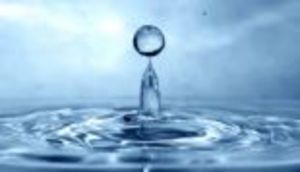Recycling and environmentalism are key components of most curriculum in school. In homes, day cares and home schools, we talk recycling. Yet so often we don’t walk the talk we preach. Schools and learning environments are a great place to begin demonstrating good environmental habits. And it isn’t difficult once some basic habits are in place. By recycling, you save loads of money on teaching supplies, have a ready stock of materials for classroom use and best of all you show students how to live an eco-friendly life.
Here is a complete guide to recycling in a classroom or home school: what to save, how to store items and how to use materials in class. You can use this list in any grade or subject from pre-school to high school. This guide has applications for any math, science, social studies, English/ Language Arts, art, music or physical education classes. Check out the links for my articles on ways to use some materials.
egg cartons: Use for paint trays, math sorting, fine motor skills, classification, storage, crafts
aluminum pie and pot pie plates: make musical instruments like shakers and drum heads, condensation experiments, science experiments, sorting, holding glue, paint or chemicals, making solutions and mixtures, cooking
cardboard pourable juice cartons: Cut top off. Sort and store different styles and colors of crayons, markers, colored pencils, paint brushes, scissors. Duct tape sides of cartons together to create pigeonholes. Place in the middle of work tables to keep supplies sorted.
aluminum cans (all sizes) Wash and flatten sharp edges.
Make star viewers.
Cover and use to show size graduations.
Make nested cans for stacking and sorting by size.
Make cup and ball tossing games.
Make eye hand coordination practice games.
sprayers and spray bottles (like laundry pre wash or house hold cleaners)
Store paint; use for spray on paint techniques
Store chemicals for science.
Use spray mechanisms for science experiments on suction.
Fill with water and make squirting games.
cereal boxes (collapse and store in milk crate)
Use for posters.
Use for cutting or painting surfaces.
Use instead of tag board for classroom displays, projects and crafts.
Cover and decorate: use as book covers for student writing
recloseable boxes of all sizes and shapes (toothpaste, pasta, etc.)
Use to make model buildings or scenes.
Use to teach students to read do math problems using packaging or nutritional labels.
Use for reading directions.
Use for building blocks.
Cover and use for geometry solids demonstration (rectangular prisms, pyramids, cones, cylinders)
Have students cover and make sets
magazines:
Use for posters, dioramas and diagrams.
Make crafts.
paper towel and toilet paper tubes
Cut and use to teach students to string beads.
Use for geometry.
Use for crafts.
pill bottles
sort and store beads
store chemicals
make musical shakers
margarine, cottage cheese or yogurt tubs
Use for supply storage.
Use for science and chemistry mixtures.
Use for art to mix substances.
recloseable pop top containers from clean-up wipes
baby wipes boxes
sort and stack science, math, office or crafts supplies:
buttons
beads
seeds
pins
rubber bands
markers
bingo chips
dice
pennies
bread tags
milk rings
pom-poms
coins
twist ties for art
twist ties: use for connecting items, like cable ties
bread tags (the plastic ones that hold bread bags closed) Use for counting.
cable ties
decorative foam shapes
magnetic letters
rice
zippered bags from blankets or comforters: Use these to sort, separate and store recycled materials
plastic powdered laundry soap tubs (large size) Place these open on a shelf sideways so the mouth faces outward. They will tilt upwardly in front. You can use these as bins to store all your bulk materials:
Styrofoam shapes
feathers
ribbon
yarn
greeting cards
fabric scraps
shells
stones
minerals
wood pieces
cardboard scraps
bread bags
plastic bags
odd shaped noodles
plastic coffee tubs: Use these to sort and store items like you use the baby wipe containers. I like these for loose or powdered items like salt, sugar, flour, plaster of paris, colored sand, etc.
coffee cans: Great for mixing and melting items; Use like a double boiler on a hot plate or stove.
fabric softener or laundry soap jugs
odd sized zippered bags, especially the small ones that come attached to garments and hold a spare button
Use to store game parts.
Use to make individual paint or glue tubes. Fill with paint. Snip a corner. Students can control paint better.
milk jugs
This should give your classroom, whatever the grade or subject a great supply of materials for any project!

